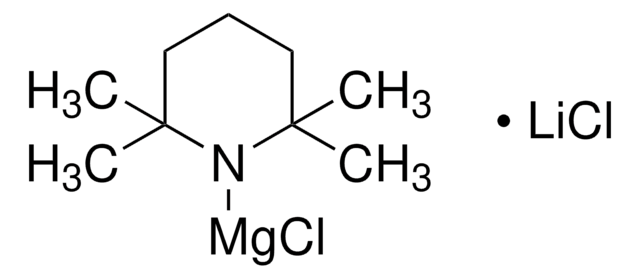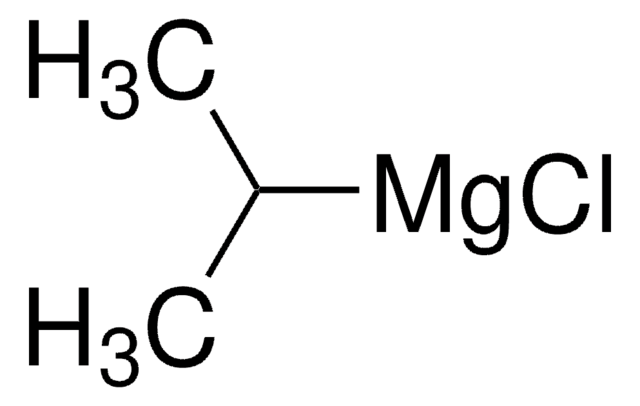703516
Zinc chloride solution
1.9 M in 2-methyltetrahydrofuran
Synonyme(s) :
Dichlorozinc
About This Item
Produits recommandés
Forme
liquid
Niveau de qualité
Pertinence de la réaction
reagent type: catalyst
core: zinc
Caractéristiques du produit alternatif plus écologique
Catalysis
Learn more about the Principles of Green Chemistry.
sustainability
Greener Alternative Product
Concentration
1.9 M in 2-methyltetrahydrofuran
25 % (w/w)
Densité
1.07 g/mL at 25 °C
Autre catégorie plus écologique
, Aligned
Chaîne SMILES
Cl[Zn]Cl
InChI
1S/2ClH.Zn/h2*1H;/q;;+2/p-2
Clé InChI
JIAARYAFYJHUJI-UHFFFAOYSA-L
Vous recherchez des produits similaires ? Visite Guide de comparaison des produits
Description générale
Application
2-Methyltetrahydrofuran (2-MeTHF): A Biomass-Derived Solvent with Broad Application in Organic Chemistry
Mention d'avertissement
Danger
Mentions de danger
Conseils de prudence
Classification des risques
Acute Tox. 4 Oral - Aquatic Acute 1 - Aquatic Chronic 1 - Eye Dam. 1 - Flam. Liq. 2 - Skin Corr. 1B - STOT SE 3
Organes cibles
Respiratory system
Risques supp
Code de la classe de stockage
3 - Flammable liquids
Classe de danger pour l'eau (WGK)
WGK 3
Point d'éclair (°F)
10.4 °F - closed cup - Solvent
Point d'éclair (°C)
-12 °C - closed cup - Solvent
Équipement de protection individuelle
Faceshields, Gloves, Goggles, type ABEK (EN14387) respirator filter
Faites votre choix parmi les versions les plus récentes :
Déjà en possession de ce produit ?
Retrouvez la documentation relative aux produits que vous avez récemment achetés dans la Bibliothèque de documents.
Les clients ont également consulté
Articles
Colloidal quantum dots (CQDs) are semiconducting crystals of only a few nanometers (ca. 2–12 nm) coated with ligand/surfactant molecules to help prevent agglomeration.
Notre équipe de scientifiques dispose d'une expérience dans tous les secteurs de la recherche, notamment en sciences de la vie, science des matériaux, synthèse chimique, chromatographie, analyse et dans de nombreux autres domaines..
Contacter notre Service technique








